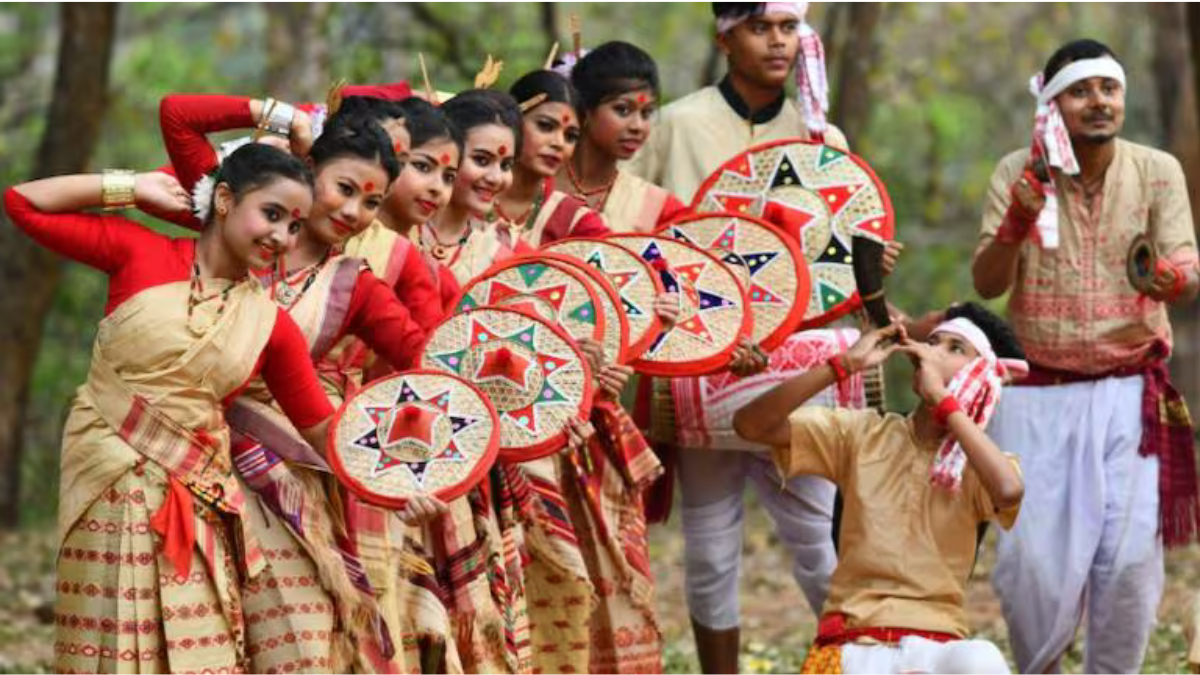Rongali Bihu, also known as Bohag Bihu, is being celebrated across Assam in mid-April 2025, marking the Assamese New Year and the beginning of the agricultural season. This vibrant festival is not only a celebration of spring and harvest, but also a reaffirmation of Assamese identity, culture, and community spirit.
Introduction: What is Rongali Bihu?
Rongali Bihu is one of the most important and joyous festivals of Assam, observed during the month of Bohag (April), which signifies the onset of the Assamese New Year. It is celebrated with great enthusiasm across the state, uniting people of all ages and backgrounds. As the first of the three Bihus observed in a year (the others being Kati Bihu and Magh Bihu), Rongali Bihu marks a time of agricultural renewal, family bonding, and cultural expression.
Historical Context and Cultural Significance
Rongali Bihu has its origins rooted in agrarian traditions and the seasonal rhythms of rural life. The name “Rongali” comes from the word ‘Rong’, meaning joy or celebration. The festival has been observed in Assamese society for centuries, showcasing a deep connection with nature, agriculture, and traditional community life.
The festival coincides with the beginning of sowing season, where farmers prepare the land for new crops. Over time, while the rituals and celebrations have been adapted to modern lifestyles, the essence of Bihu, as a celebration of life, love, labor, and land remains unchanged.
Duration and Structure of Rongali Bihu
Rongali Bihu spans over seven days and is often referred to as ‘Xaat Bihu’. Each day of the festival has a unique focus and symbolic significance:
- Goru Bihu (Day 1): Dedicated to cattle, who are considered vital to farming. Cattle are washed, decorated, and worshipped in rural homes.
- Manuh Bihu (Day 2): Focuses on human celebrations, where people wear new clothes, seek blessings from elders, and exchange gifts and traditional food.
- Gosain Bihu (Day 3): Deity worship is performed for a prosperous year ahead.
- The remaining four days include different rituals and community gatherings, depending on the region and local customs.
This seven-day observance makes Rongali Bihu a multi-dimensional celebration that blends religious observances, folk traditions, music and dance, and culinary delights.
Rituals and Traditions: A Deep Connection with Nature and Culture
The ritualistic depth of Rongali Bihu sets it apart:
- Goru Bihu involves bathing cattle in rivers or ponds, applying turmeric paste, and tying new threads and garlands. This shows the respect and gratitude farmers have towards their livestock.
- Manuh Bihu is marked by early morning baths, wearing of traditional attire (like mekhela sador for women and dhoti-kurta for men), and the exchange of blessings and gifts among family and friends.
- On Gosain Bihu, families offer prayers to household deities, seeking well-being and success for the year ahead.
Throughout the week, there are Bihu dances, drum performances (dhol-pepa), and melas (fairs) that bring the community together.
Culinary Celebrations: The Flavor of Bihu
Food is at the heart of Bihu celebrations, showcasing Assamese culinary heritage. Some traditional delicacies prepared and shared during the festival include:
- Chira (flattened rice)
- Pitha (rice cakes) – including varieties like til pitha, ghila pitha, and narikol pitha
- Laru (sweet coconut or sesame balls)
- Doi-Gur (curd and jaggery)
These dishes not only reflect the local ingredients and tastes of Assam, but also foster a sense of togetherness during the festive meals.
Modern Celebrations and Cultural Revival
In contemporary times, Rongali Bihu has grown into a large-scale cultural festival, with state-sponsored events, Bihu dance competitions, and youth participation in preserving folk traditions. The Bihu dance is even considered for international cultural showcases, and efforts are underway to get it UNESCO recognition as an intangible cultural heritage.
Rongali Bihu is now celebrated not only in Assam but also by Assamese diaspora communities around the world, who keep the tradition alive through local Bihu sammelans and gatherings.
Summary Table: Rongali Bihu 2025 – Key Highlights
| Category | Details |
|---|---|
| Why in News | Celebrated in mid-April 2025 across Assam, marking Assamese New Year |
| Festival Name | Rongali Bihu (also called Bohag Bihu) |
| Cultural Significance | Marks the onset of agricultural season and spring |
| Duration | Seven days, referred to as Xaat Bihu |
| Key Ritual Days | Goru Bihu (Cattle), Manuh Bihu (Humans), Gosain Bihu (Deities) |
| Main Traditions | Bathing cattle, wearing new clothes, worship, folk dances |
| Important Dishes | Chira, Pitha, Laru, Doi-Gur |
| Core Themes | Nature, community, harvest, joy, gratitude, and identity |
| Modern Cultural Impact | Featured in global Assamese diaspora celebrations and folk festivals |
| Keywords | Rongali Bihu, Bohag Bihu, Goru Bihu, Assamese New Year, Bihu Food, Bihu Dance, Xaat Bihu |



 Chhattisgarh Gets Its First Ramsar Site:...
Chhattisgarh Gets Its First Ramsar Site:...
 Maharashtra Ends the Century-Old Pagdi S...
Maharashtra Ends the Century-Old Pagdi S...
 Maharashtra Govt Partners with Microsoft...
Maharashtra Govt Partners with Microsoft...







